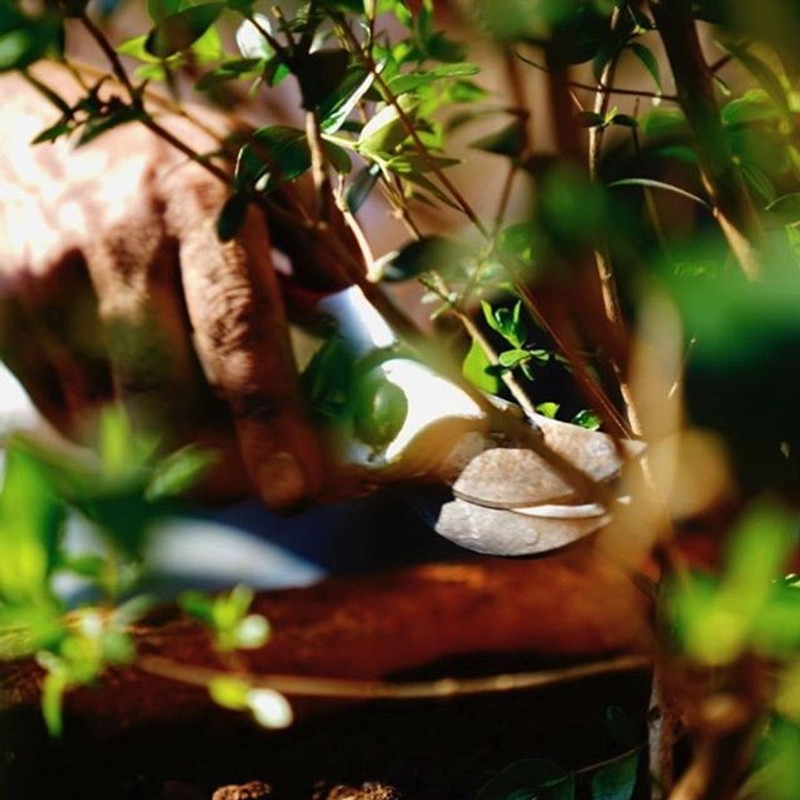Why do we prune fruit trees?
- Improve the structure increase flowering wood and assist with disease resistance by having good air flow
- Unpruned trees will have loads of fruit however they will be small and hard
- Easier to pick the fruit and cover with bird netting if needed
- Pruning stimulates new growth of fruiting wood
- Remove dead or diseased wood
- Allow sunlight –encourage flowers which will amount to fruit and add extra sugar to the ripening process so that the fruit are more flavoursome
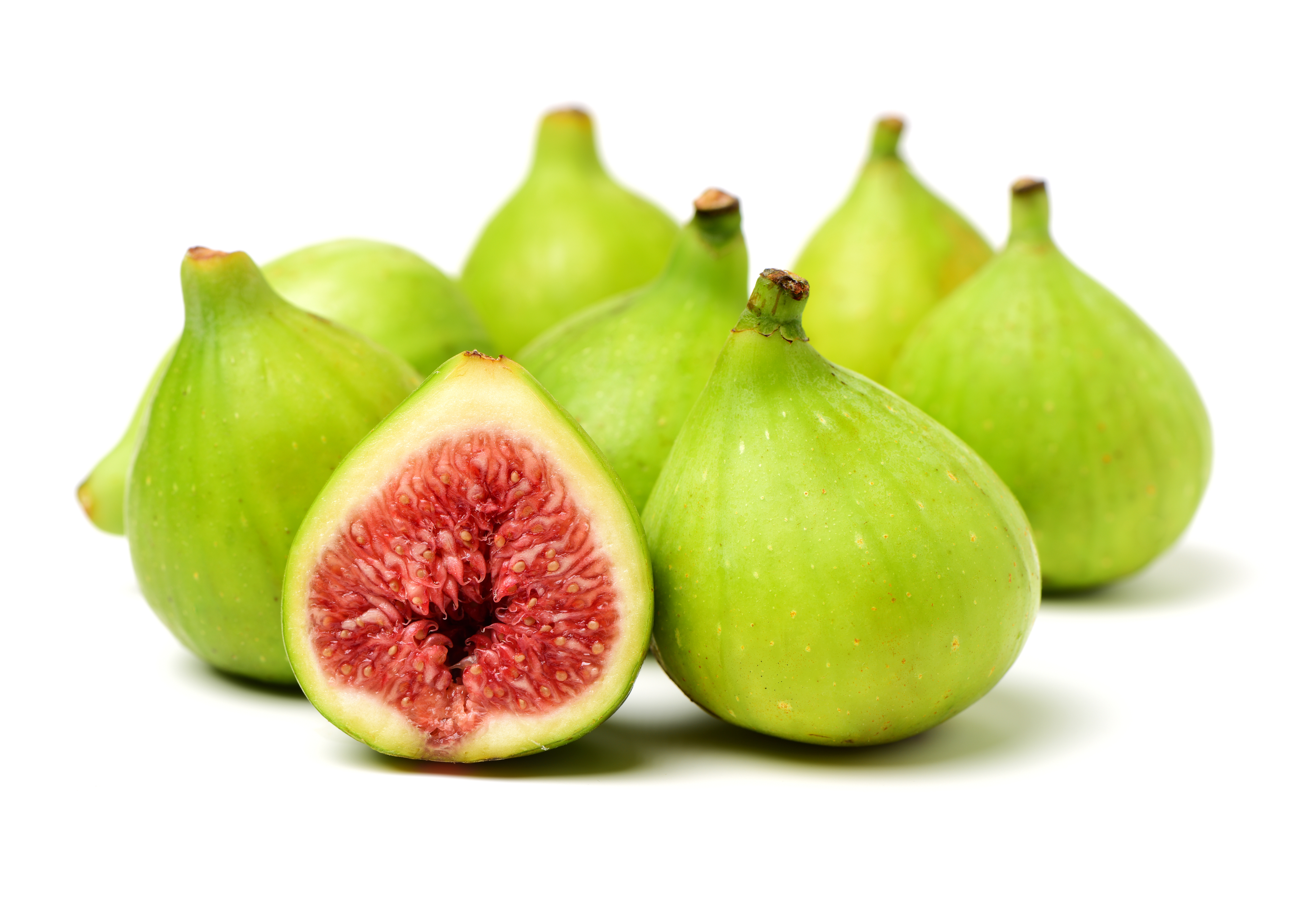
Basic Pruning tips
Before any pruning cuts are made to a tree to make it smaller or change its shape, there are a few pruning steps which need to be carried out first:
- Remove any dead, diseased and broken branches.
- Eliminate crossing branches by pruning out one of the branches.
- Remove suckers, water sprouts and most competing branches
growing straight up into the tree. - Keep these basic tips in mind and don’t worry too much, the only harm you can really do is prune the wrong fruiting wood and need to wait an extra year
- Use sharp pruning shears for any cuts on branches smaller than 20mm in diameter. Use loppers or a pruning saw for larger diameter wood.
- Cut thin diameter branches just above a bud that is facing in a direction you want the new branch to grow. Make the cut on an angle to shed water and promote faster healing.
- Think about what wood the fruit tree produces fruit on and prune accordingly
- Horizontal branches produce more fruit than vertical ones. Prune vertical branches back to a main stem or trunk.
- In spring and summer, remove suckers arising from the base of the tree and water sprouts arising from branches. Depending on the cuts and type of tree, pruning can stimulate lots of this type of growth, so it's best to remove it quickly so the tree can put more energy into growing fruiting branches.
- Prune moderately every year to keep the tree healthy and fruiting consistently. The tendency of some fruit trees to bear in alternate years can be caused by insufficient pruning.
- Remove and clear the clutter within the tree. We want a nice, open framework and not too many competing branches, because it won’t fruit properly. Remove any crossing and low branches
The purpose of removing diseased branches is for the purposes of good plant hygiene, to prevent diseases spreading further and killing the tree, or infecting other trees.
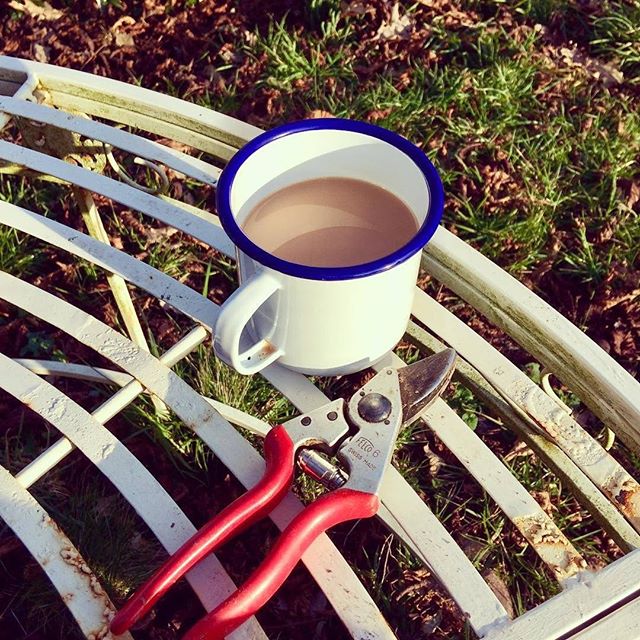
We recommend when pruning fruit trees to prune above a bud at a 45-degree angle is so that the water runs off, away from the bud. If the bottom of the sloped cut directs water into the bud, it may cause it to rot.
Pruning and training should start when trees are quite young. This will prevent many serious problems before they develop. Older, neglected trees are more difficult, dangerous, and expensive to prune. Most of the pruning on older trees should be done when they are dormant; there is less weight on the limbs. At this time, it is easier to see the framework of the branches. Pruning of young trees should be done when problems can be observed.
Some trees, such as Apricot, cherries, birch, dogwood, elm, honey locust, maple, and walnut exude excessive sap from the wound when pruned in late winter or early spring. Prune these trees can be pruned in late spring, summer, or autumn to minimize sap flow and to overcome setting your tree backward.
The old practice of pruning tree branches was to cut flush with the tree trunk. When this is done the ability of the tree to stop decay is greatly decreased. Flush-cut pruning cuts into the wood of the trunk cause a wound that can allow decay organisms to infect the main trunk of the tree. The current recommendation is to prune the branch to just outside the collar.
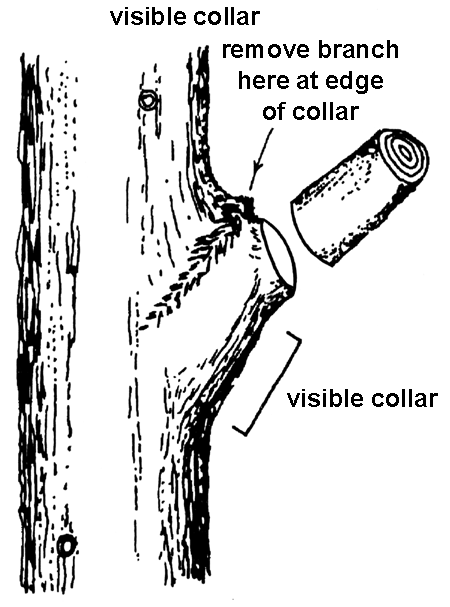
There are many ways of pruning fruit trees, and possibly the only consistency is that no two orchardists will prune a tree in exactly the same manner, but they will follow the same basic rules for each particular tree type.
- Central Leader Training to a central leader produces a tree that has a pyramid shape. This system is mainly used on apples, pears, and dwarf fruit trees. A strong central branch and many smaller lateral branches growing from it. This system emphasizes removing competing lateral branches and keeping the branch structure balanced. Begin by working up the trunk, starting at the lowest branch. Prune this and the next five of the stronger branches to approximately 200mm in length, selecting branches that will result in radial pattern around the central leader. Imagine a set of almost horizontal branches forming a layer of ‘scaffold’ branches. Continue up the central leader, pruning back all the unwanted branches to the trunk. The aim for the following years is to create a framework of layers of horizontal branches with a clear area of trunk for approximately 400 mm between each layer, up to a height of about 2.5 metres with the upper layers progressively narrower than the lower layers.
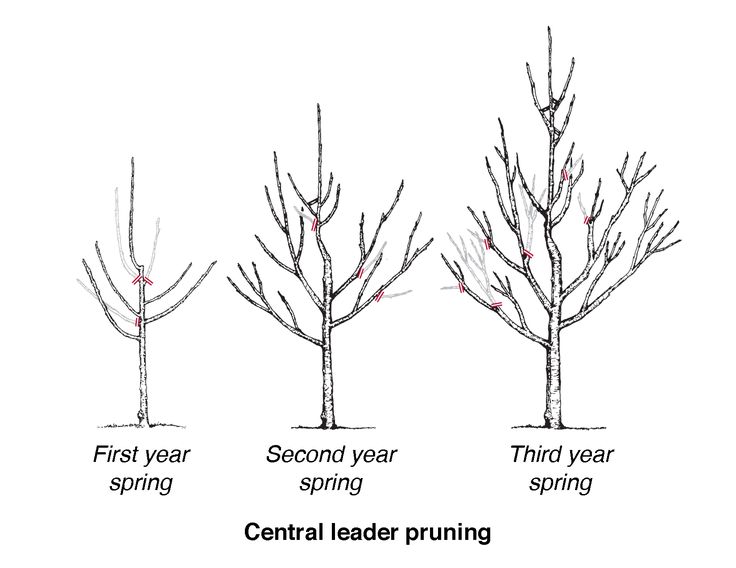
- Open Centre or open Vase - The aim here is to establish a strong framework of branches in the shape of a 'V' or vase. This technique is commonly used on peach, nectarine, plum, cherry, and apricot trees. The central leader is removed and the centre is open with three to four main limbs spaced around the trunk. Many smaller-sized branches emerge from the main limbs to create a rounded vase shape. The advantages of the ‘vase’ shape are that the centre of the tree is open, allowing the middle of the tree to receive adequate sunlight and air circulation

Historically wound dressings have been mistakenly applied to pruning cuts to block out microorganisms, keep moisture in or out, and speed the "healing" process. However, research has indicated that treated wounds do not close quicker than untreated wounds. In most cases, sealed wounds actually give wood inhabiting microorganisms an environment favourable for growth and decay development. Some wound dressings kill cambial cells and cause the wound to remain open for years longer than if no treatment had been applied
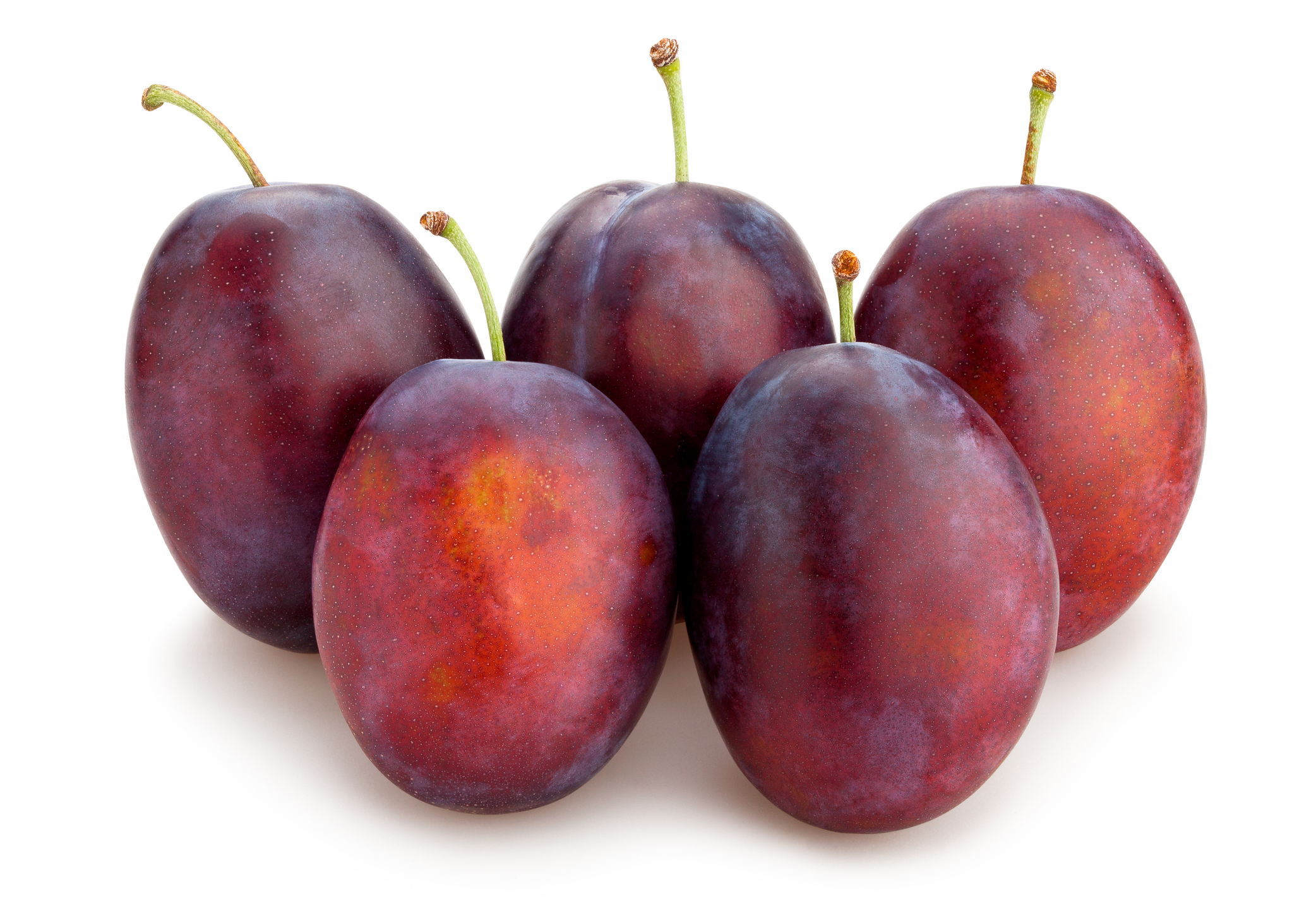
APPLES & PEARS
Apple trees are great because they are so versatile. They offer differing, shapes and sizes allowing us to use them in just about any garden situation, even if we only have only a small patio area.
Training begins at planting and may be required for several years. Pruning is an annual management practice. Two basic pruning cuts are heading and thinning. Heading or heading back removes the terminal portion of shoots or limbs. Thinning removes an entire shoot or limb to its point of origin on the main branch or lateral.
Light pruning can be performed throughout the growing season to remove broken, injured or diseased branches and to improve air circulation to control foliage diseases. Major removal of twigs and branches should be done during the dormant season, preferably before active growth begins in the spring. Training and pruning procedures vary according to the type, age and variety of fruit crop.
They are very tolerant of different pruning methods, and even do well being espaliered along a wall or fence. This gives you many options to choose a shape for your tree that best suits your tastes and needs.
Apple and pear trees grown under favourable conditions will set more fruit than they are capable of carrying to maturity. It is essential to remove excess fruit from the trees to assure satisfactory development of fruit remaining on the tree. Failure to remove the excess fruit will decrease flower formation for the following year and cause the tree to produce a crop only every other year.
Fruit should be removed by hand to one per cluster. Space fruiting clusters about every 15 cm along the limb. To remove the fruit without damaging the spur or other pears on the spur, hold the stem between the thumb and forefinger and push the fruit from the stem with the other fingers. This method will remove the pear leaving the stem attached to the spur.
The earlier that hand thinning is completed, the more effective it will be in achieving the desired results. Midsummer thinning will help to improve fruit size, but it will not aid in the formation of next year's flower buds. Most of the flower buds for next year are initiated during a four to six week period following full bloom, so thin before this time.
Apples and pears fruit on lateral, non-vigorous wood that is at least two years old and produce fruit on long-lived, stubby twigs called "spurs" often called "old wood.
We have found that the best time to prune apple trees is in late winter (August) before any new growth starts and at this time of year you can locate the plump rounded fruiting buds which helps you determine where the fruit will be setting.
APRICOT
Apricots flower very early, so if you are in a frost prone area then be sure to select an appropriate variety. Fruits are produced on spurs as well as on the wood of the preceding year. Consequently, the spur growths are not cut off so long as they continue to bear. Apricots set a lot of fruit, so thin the fruit heavily, to ensure adequate fruit size. Apricot wood is also very brittle. Limbs too heavily laden with fruit tend to break off.
Prune apricots lightly, as large cuts are prone to fungal disease. To reduce the chances of infection, we prefer to prune when the weather is warm and dry preferably in summer after fruiting by using the open vase technique. Remove or shorten shoots competing with the leader and thin out lateral shoots to avoid crowding. Most apricot trees are pruned as an open vase.
Plum
When pruning plums (and in our opinion) it is important to train the tree into a vase shape. This means opening up the centre of the tree to let in the light. Look for six to nine nice, strong branches that can form that framework. When working with a Japanese plum look to see what interferes with the shape of the tree. Most fruiting will occur on wood which is two years old. They also produce freely on permanent fruiting spurs.
If allowed to grow unchecked the plum tree will become unruly and produce fruit in large quantities which will cause the branches to break from the weight.
When pruning plums it is important to train the tree into a vase shape. This means opening up the centre of the tree to let in the light. Look for six to nine nice, strong branches that can form that framework. When working with a Japanese plum look to see what interferes with the shape of the tree. The next priority is to reduce any tall, whippy growth. Plums fruit on fruiting spurs and one year old laterals, so it's important to remove any old or dead wood that's cluttering the tree to encourage new growth. The ideal is to end up with a strong terminal with lovely fruiting spurs ready for this season's plums.
Good orchard hygiene is also important so after finishing collect the pruning s, and dispose of them and remove any old, rotten fruit because these could harbor disease and don't prune too hard once established as this will cause excessive tall growth

CHERRIES
Sweet cherries fruit on one and two-year-old wood and on spurs of older wood so only require light pruning. Shorten branches by reducing about a third of their new growth to encourage the development of fruit buds. Cherries produce fruit on spurs and these spurs are viable for many years, so once establishing the framework branches cherry trees require very little pruning. Broken branches and any branch that is crowding out another should be removed.
Cherries are prone to bacterial canker and we recommend pruning in spring or summer
PEACH & NECTARINE
Peaches and nectarines need minimal pruning because they crop on young wood, one & two-year-old laterals. We prefer the vase shape method
It is important that the last season’s growth of peaches and nectarines be pruned to ensure adequate growth of fruiting wood and to keep the fruit close to the main framework branches.
The aim is to have new laterals shooting from the main framework each year, thereby keeping the fruit close to the main branches. The best fruit is produced close to the stronger main branch as it is less prone to breaking off or to wind damage
Peaches and Nectarines can suffer from bacterial canker and although we are still pruning our plants in winter we are finding that pruning after fruiting in summer does reduce the risk of disease
ALMOND
Almonds fruit on semi-permanent spurs and sprigs. Always prune an almond when it is planted during the dormant season.
Almonds are particularly easy to prune and we prefer the open vase method. After establishing the framework of branches (from about tree age of six years) and keeping the centre free from branches, the only pruning needed for almonds is to remove one of the framework branches each Year. This allows new wood into the tree to replace the framework branch. Prune the top of the higher branches to keep the height down to a manageable 2.5 metres
Good orchard hygiene is also important so after finishing collect the pruning, and dispose of them and remove any old, rotten fruit because these could harbor disease.
BLACKBERRIES:
Blackberry when planted in the autumn should be cut back to 15 centimetres. Blackberries require plenty of room, so set them 1 meter apart in rows 2.5 metres. During the second summer cut off at the ground line those canes which have fruited and cut back the remaining canes about one third. The following spring cut back the laterals about one third and the thin, spindling shoots to the ground line.
BLUEBERRIES:
Blueberries require minimal pruning, prune out weak twiggy shoots and to remove one or two of the oldest branches annually and possibly cut off some of the weaker of the fruit-bearing shoots. This is a case, as always, of using your own perceptions in deciding how much pruning is desirable, because some varieties are more prone to over-bearing. Also they may behave differently in bearing in different environments.
RASPBERRIES:
Summer fruiting varieties: During late autumn/winter prune all of the fruited canes which have fruited to the ground. Thin the new canes to five or six of the strongest in each clump. The new canes are next summer fruit and should be retained
Autumn fruiting varieties: Cut all the canes to the ground after the last fruit is harvested. *For further information visit harmonygc.com.au/blog/growing-raspberries-in-tasmania/
Fertilising with Neutrog Products
During winter, there may be less obvious plant growth on the surface above the ground, but there is still plenty going on below the ground. Spreading Whoflungdung can help with temperature variance and control erosion from higher rainfall, Seamungus can provide a gentle, organically based nutrient dense mid-winter boost and GOGO Juice adds the beneficial microbes that will ensure your plants have a head start for spring.
For optimal fruit production, consider using Neutrog’s balanced fruit fertiliser in spring, this will proved a well-rounded supply of nutrients throughout the growing season. By incorporating these fertilisers into your pruning routine, you’ll not only maintain the structure and health of your plants but also maximise their fruiting potential.

